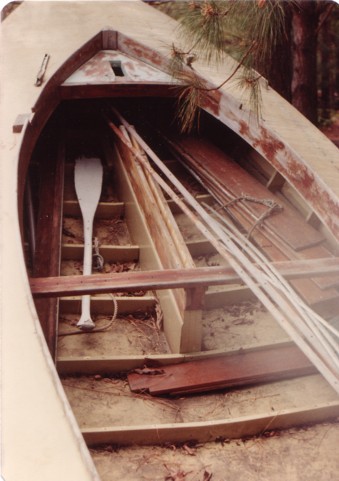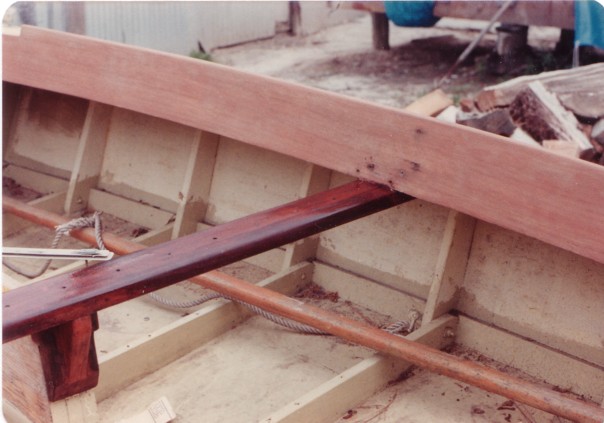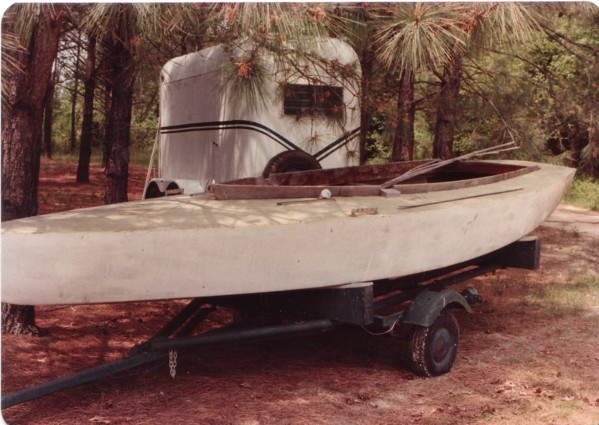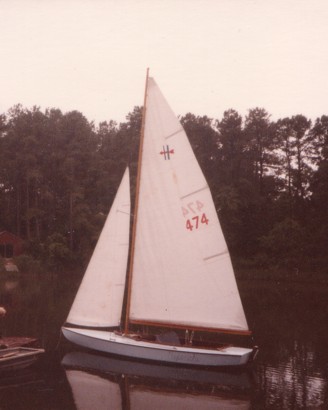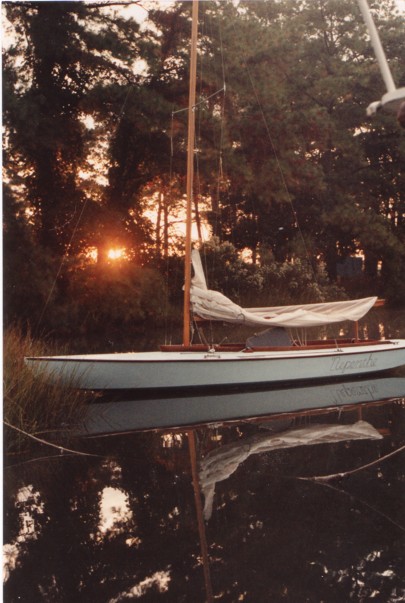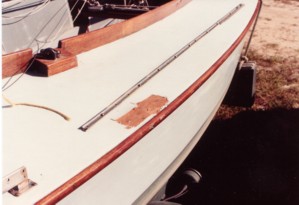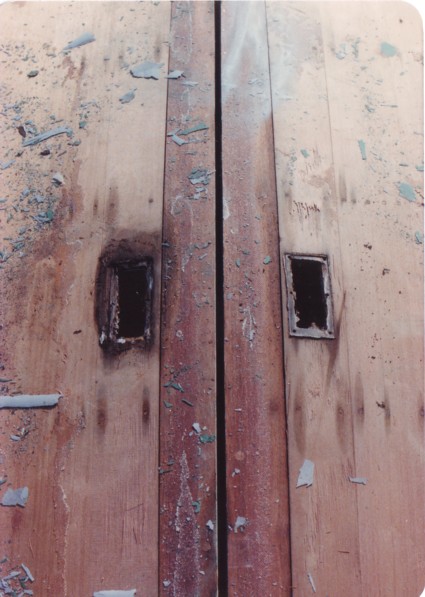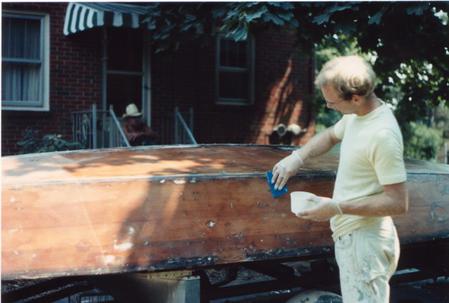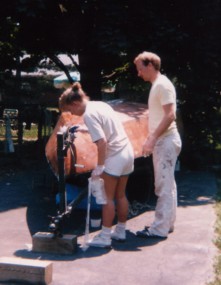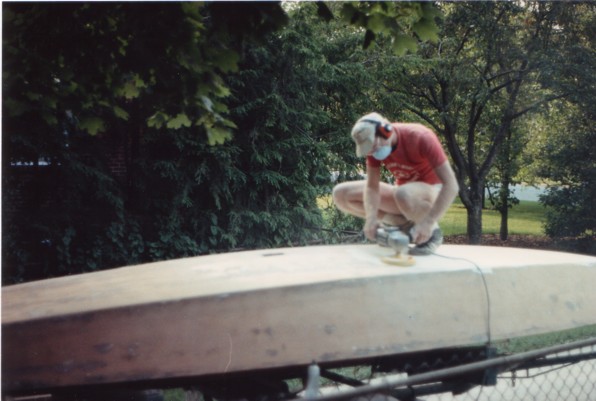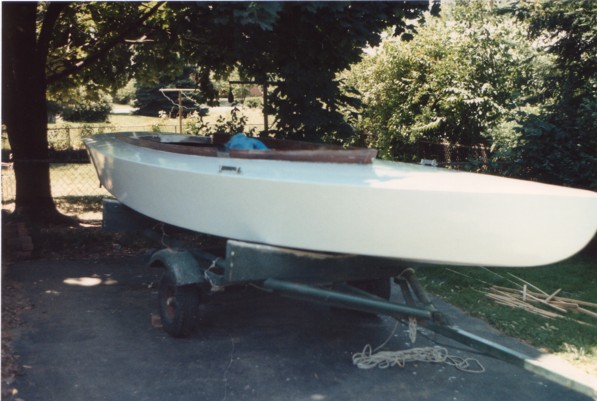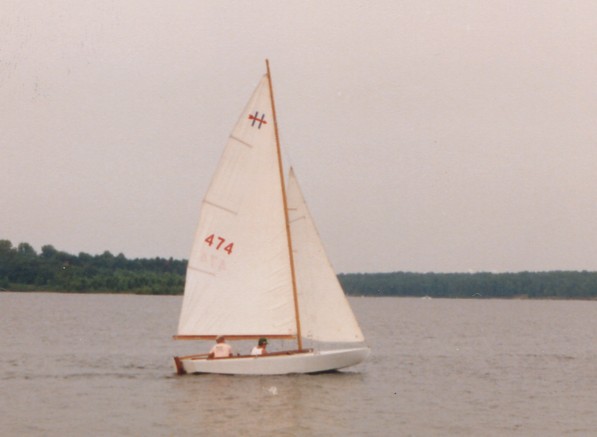Hampton One Design, designed by Vincent Serio, Newport News, VA 1934
Designed for the light conditions prevalent on the Chesapeake in the summer, the Hampton carris 157 sq. ft. of sail, no spinnaker and one trapeze. Its light weight allows it to move in just a ghosting of air. I once passed a 40 footer motoring at 5 knots.
For more about the Hampton, see WOODENBOAT Magazine #162 Sept/Oct 2001
This is how I got the Hampton in April, 1984. The boat had been sitting upside down on the trailer for about three years. All the varnish had weathered off the coamings. The cockpit was filled with leaves, pine needles and assorted debris that had blown into it. The Douglas fir spars were practically bare, and so rough I gave up stripping them and just used a slow speed grinder to get to bare wood, and then sanded them. Despite the neglect, there was very little rot present and no structural problems. I started by doing a thorough cleaning and stripping off all hardware, followed by sanding and minor wood repairs.
I don't have many photos of the initial overhaul, but the picture on the left compared to the right gives some idea of how rough the boat was. Here I have wooded the coamings and started varnishing as seen by the traveler bar.
The photo on the right was taken a few months later with the boat moored at the boatyard I worked at. I got off work at 4:00 and by 4:15, I was usually on my way out of the cove. This was my routine 3-4 days a week for most of the summer. The boat was initially painted
BOLD BLUE but that was too much, so I mixed it with white and came up with the robin's egg color.
1984 was the 50th anniversary of the Hampton Class. I took the boat to Hampton Yacht Club and sailed in the wooden Hampton regatta where I was tee-boned by a Port tack boat (I was on Starboard with rights) causing the damage in the picture to the left.
On the right is what I found the following spring when I removed the fiberglass covering that had been set in polyester resin. Although not a good choice, this probably preserved the boat given the neglect it had suffered prior to my purchase.
I stripped the boat completely, filled and faired the hull, then painted it to temporarily protect the hull. The boat then sat for two years while life intruded. Then in 1988 I completely sanded the hull, laid fiberglass set in epoxy and painted it white. I even recruited my wife to help me 'glass the hull!
Below left is the finished hull. Below right I'm sailing with my best friend on Lake Anna, VA.
